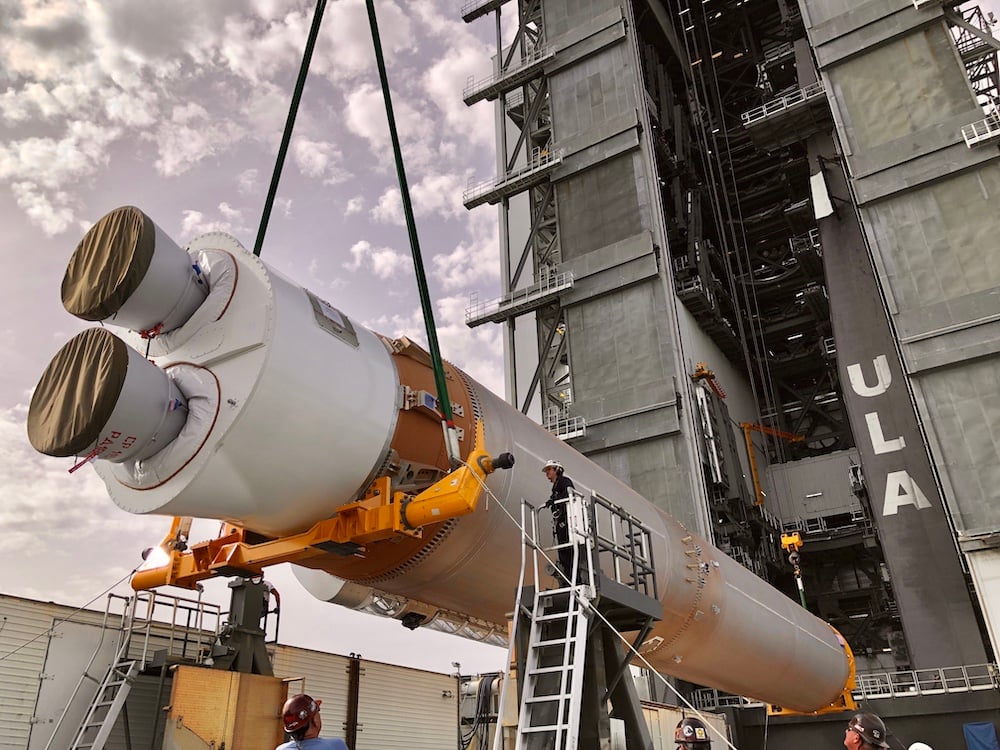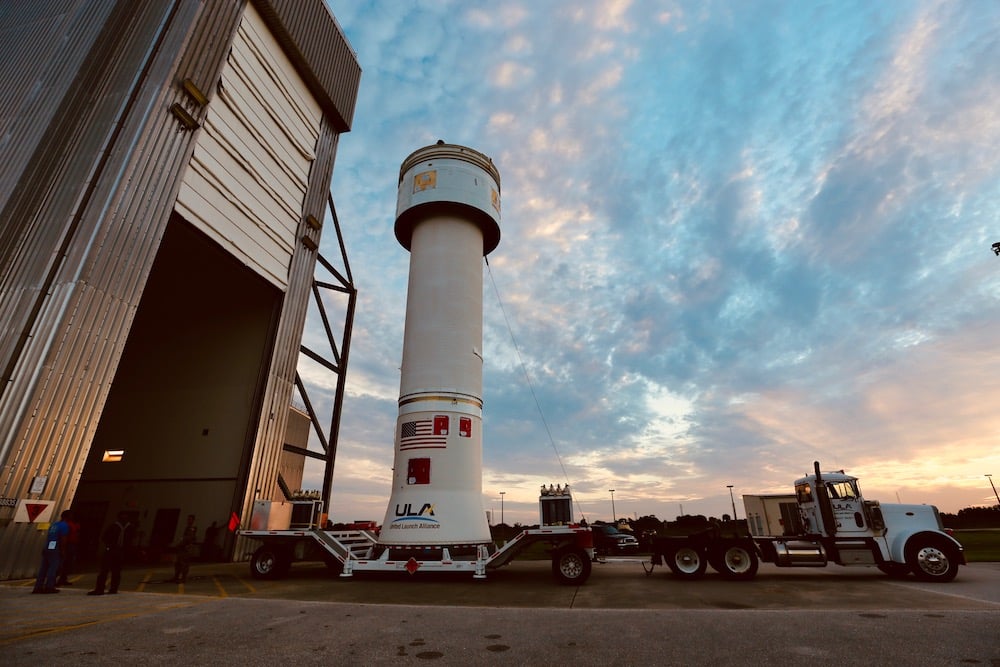The uniquely configured Atlas V rocket is assembled following initial stacking operations for the launch of Boeing's CST-100 Starliner spacecraft on the second Orbital Flight Test (OFT-2) mission.
The 145th ULA mission is the second flight of Atlas V’s N22 variant featuring two solid rocket boosters (SRBs), two RL10 engines on the Centaur upper stage and a Launch Vehicle Adapter that connects Starliner to the rocket. The configuration provides the necessary performance to deliver Starliner to the desired trajectory in space.
This Atlas V, designated AV-082, arrived at Cape Canaveral Space Force Station from ULA's factory in Decatur, Ala., on June 1, 2019, to support a Starliner launch. On June 17, the first stage was brought to the Vertical Integration Facility (VIF) and hoisted aboard the Mobile Launch Platform (MLP).
At the VIF, which serves as our 30-story-tall vertical assembly building for the Atlas V and new Vulcan Centaur, crews then went to work setting up ground handling equipment. Two cranes grappled both ends of the 107-foot-long stage so that it could be lifted free from its carrier. Next, the aft portion was secured in a special dolly that rides rail tracks, allowing the rocket to be rotated from horizontal to upright by the overhead crane while also the rear inched closer to the VIF.
Once vertical, the aft structure was disengaged and the crane holding the forward end of the rocket slowly and carefully hoisted the stage into the VIF and positioned it aboard the MLP. This achieved the Launch Vehicle on Stand (LVOS), a milestone that officially begins the launch campaign and signals another mission is right around the corner.

The twin SRBs were attached on Tuesday July 6, and Thursday July 8, to opposite sides of the stage. Manufactured by Aerojet Rocketdyne, the AJ-60 boosters will provide nearly half of the energy at liftoff to power the million-pound rocket and Starliner spacecraft into the sky.
This morning, the Offsite Vertical Integration (OVI) structure, which consists of the interstage, Dual Engine Centaur upper stage and Launch Vehicle Adapter, was lifted atop the first stage to finish the initial buildup of the vehicle. Centaur will produce 44,000 pounds of thrust from its two RL10A-4-2 cryogenic engines to accelerate Starliner to the prescribed trajectory.

Activities to verify Atlas V is ready to launch is planned over the next few weeks, including powering up the rocket, checking the flight control systems on the Atlas and Centaur stages, performing engine steering profiles and running the Combined Systems Test.
The 172-foot-tall rocket will be completed when the Starliner is mounted aboard the Atlas V. A ULA payload transporter moves the capsule from Boeing's Commercial Crew and Cargo Processing Facility (C3PF) at the Kennedy Space Center to the nearby VIF for attachment.
Atlas V will propel Starliner off the pad on 1.6 million pounds of thrust at the exact moment the International Space Station's orbital plane crosses over Space Launch Complex-41. Starliner is headed for an automated rendezvous and docking to the station for an uncrewed demonstration as part of NASA's Commercial Crew Program.
Launch of OFT-2 is scheduled for no earlier than July 30, 2021.
For more photos, visit Flickr.

 Back To Blog List
Back To Blog List



